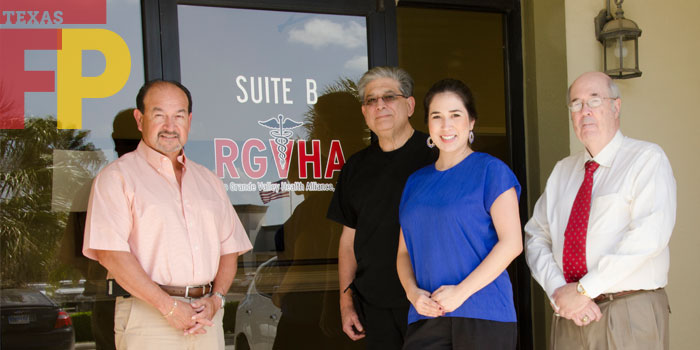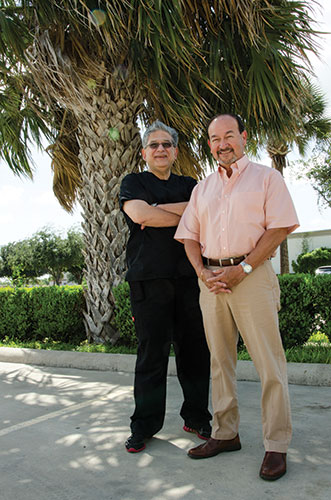Embracing change on the border

Embracing change on the border
RGV Health Associates ACO makes Medicare shared savings work in the Rio Grande Valley
By Jonathan Nelson
McAllen, Texas became ground zero for the national debate about out-of-control health care costs in 2009, when Atul Gawande, MD, published his influential article “The Cost Conundrum” in The New Yorker. In it he claimed that McAllen was the most expensive place to receive health care in the country.
The article illustrated the indefensible variation in health care costs from region to region by showing that medical services were twice as expensive in McAllen as they were 800 miles upriver in El Paso. Why such a discrepancy?
Overuse of expensive medical treatments and diagnostics are a direct result of our fee-for-service environment, which has allowed an unsustainable inflationary trend in health costs. In some regional markets like McAllen, costs have ballooned more freely than in others.
Employers, insurers, and governments federal, state, and local have been pushing hard for a transition in health care from volume-based payment to value-based payment that rewards hospitals, physicians, and other providers for keeping patients healthy rather than paying ever-increasing fees for treatment when they get sick.
The idea of transitioning health care delivery from volume to value permeated the national discussion over health care reform during the first two years of the Obama administration, often articulated as the Triple Aim: better patient care, better population health, and lower per capita health care costs. Suddenly just about everyone in health policy could show you McAllen was on a map.
Today McAllen is home to a group of primary care physicians who took on that challenge. Instead of holding on to the status quo as long as they could, they embraced change, and now they are providing better, more efficient care for their patients as an accountable care organization. The Rio Grande Valley Health Alliance is a physician-led ACO comprised of 14 independent physicians – mostly family doctors – in 12 practices in McAllen and surrounding communities. In their first year of participation in the Medicare Shared Savings Program, they saved more than $6 million, and $3 million of that is theirs to keep.
In the fall of 2011, Luis Delgado, Jr., MD, took a trip to Orlando, Florida, to attend the Annual Assembly of the American Academy of Family Physicians. After 21 years of private practice in McAllen, Delgado felt many of the same frustrations family physicians all over the country have.
“In primary care, we’ve been taking hits left and right ever since I’ve been in practice,” he says. “What ends up happening is what everybody knows: You start seeing more volume, which is not a good way to practice medicine. I think we’re all tired of it. We miss the ideals that we were trained as we were learning to be physicians, to practice good medicine and give patients their due time.”
At the conference, Delgado attended a presentation on accountable care organizations by a North Carolina health care lawyer named Julian “Bo” Bobbitt, Jr., and even though Delgado had never heard of an ACO, he recognized the potential for his practice and his community. “I listened to his talk and the whole concept was very intriguing to me. It really gave a whole new opportunity for guys like us in primary care to get into a different model, a different system.”
ACOs were established by the Affordable Care Act to encourage physicians, hospitals, and other health care providers to work together to better coordinate care, improve patient care, and reduce costs. In return for meeting defined performance goals, an ACO’s providers receive a portion of the savings they generate.
Since ACOs are defined by function rather than by organizational structure, they can be comprised of a number of different provider configurations. An ACO could be formed by a hospital, a group of independent physicians, a multispecialty group, a clinically integrated provider system, or some combination of these. The more integrated the component groups are, the easier the ACO formation will be.
While participating physicians and practices can remain independent, the ACO must be its own legal entity with its own tax ID so it can receive payments from third parties like Medicare or private plans, and distribute payments to providers. It must have processes to measure and report quality performance data, and it must meet a minimum threshold of total patients. To be eligible for the Medicare Shared Savings Program, an ACO needs at least 5,000 patients.
Since the passage of the ACA, several hundred ACOs of various sizes and configurations have popped up. At last count, CMS reports there are 220 ACOs in the MSSP and 23 Pioneer ACOs. Together they generated more than $372 million in savings in 2013.
After Bobbitt’s presentation at the AAFP Assembly, Delgado went home and started digging. For several weeks he studied the concept and talked with his colleagues and by early 2012, he had convinced six other independent physicians to commit to forming an ACO.
Then they called Bobbitt and the real work began.
“It’s just a remarkable story,” Bobbitt says of the progress RGVHA has made. “They were a small group of people with fantastic leadership, and they let me be a cheerleader to emphasize that it’s all about culture.”
This is Bobbitt’s mantra. In a valuable how-to guide he authored for TAFP and AAFP, “The Family Physician’s ACO Blueprint for Success,” he wrote: “The most important element, yet the one most difficult to attain, is a team-oriented culture with a deeply-held shared commitment to reorganize care to achieve higher quality at lower cost.”
RGVHA had the right culture from the beginning, Bobbitt says, but that was about all they had. They had no infrastructure, no common EMR, no capital, and no idea what to do next.
He helped them navigate the MSSP application process to become a network-model ACO, so the physicians could stay in their independent practices and be contracted with the ACO. He also helped them win acceptance to the CMS Advance Payment ACO Model, which gave RGVHA access to enough seed capital to build their infrastructure. They enlisted the help of MD Online Solutions, LLC, a health IT firm out of North Carolina, to provide HIT support, data management and reporting tools, and ongoing consultation.
“During that year – 2012 – it was all preparation, communication, understanding transparency, and working together, which was something totally new to us,” Delgado says. “It was the first time when we were banding together to do something as a group with a common goal, getting patients in better health, better quality, and reduced costs.”
By the end of the year, six more physicians had signed on bringing the total membership to 13 with just over the limit of 5,000 Medicare patients among them. CMS announced RGVHA as a participating ACO in the MSSP, and in January 2013, they saw their first patients as an ACO.
Now they are completing their second year of a three year MSSP contract, and the final announcement of their year one performance is just the latest and most empirical evidence of their success. The physician members of RGVHA are thriving, energized by the confidence that they are practicing better medicine and that their patients are healthier because of it. And the ACO is growing; as of January 2015, three more physicians are coming on board.
The quality data the ACO gathers details the improvement. ACOs in the first year of MSSP only have to show the ability to report necessary quality data and in the second year, they have to meet certain quality levels to qualify for rewards. But Bobbitt says the doctors at RGVHA have been keeping track internally and they are confident that they regularly reach the 90th percentile for most of the 33 quality metrics.
By staying on top of the data and looking for risk across their total patient population, the physicians have been able to identify the small portion of their patients who account for more than half of the ACO’s patient care spending and provide those patients with additional coordination. Bobbitt says that’s why he thinks the ACO will show even better performance in cost efficiency in 2014.
“The end result is that the patients are going to be better cared for,” Delgado says, “and we’ll be alerted in a much faster way when patients need to be brought in.”

From left: Roger Heredia, MD, RGVHA Medical Director, and Luis Delgado, Jr., MD, RGVHA President
“The amazing thing is your doctors are finally getting data in their hands,” Bobbitt says. “They’re finding out the high cost hospitals; they’re finding out the runaway home health costs.” When they recognize the outliers, they gather to plan ways to address them.
According to Delgado and the ACO’s medical director, Roger Heredia, MD, care coordinators are another critical component to quality improvement. Bobbitt calls care coordinators the “secret sauce” of ACO success.
“By going to our patients’ homes and looking not just at their medical illnesses but looking at their surroundings, the environment in which they live, the care coordinators can really give us a heads up about things,” Delgado says. This is extremely important in reducing hospital readmissions, ensuring proper care when patients transition back home from a hospital stay, and sorting out medication confusion for complex patients.
The care coordinators also help review charts to monitor the ACO’s performance and adherence to the MSSP quality standards. For a small ACO like RGVHA, this kind of personal integration is synergistic. It not only puts more eyes on the strengths and weaknesses of individual providers and processes so strategic adjustments can be made in a timely manner, but it builds on the culture of teamwork shared by the group.
Bobbitt says the end result is healthier patients and happier physicians. “You talk about the shared savings payment – that really is recognition of respect. It’s the empowerment of seeing happier, healthier patients and being unhandcuffed that is really fueling this for the doctors. … I think it’s as much a professional reward as it is an economic reward.”
“I’ve been practicing 24 years,” Delgado says, “and in that time, I’ve never seen an opportunity like this. I don’t know if there will ever be another opportunity like this.”
For RGVHA, taking this path has made all the difference, but ACOs are only one way family physicians and other primary care providers can address today’s tectonic shifts in health care delivery. All indications in the health care marketplace point to the ascendancy of value-based medicine. In coming years, payers will increase their use of value-based contracts, quality metrics, and narrow networks.
“Unfortunately those doctors who are sitting on the bench are making a big mistake because the future of medicine has already been told,” Heredia says.
He and Bobbitt agree that doing nothing is a huge decision, which will most likely lead to what Bobbitt calls the “default future.”
“Do you think we’re going to raise taxes? Not going to happen. Do you think you’re going to limit access to care or limit benefits? That’s not going to happen. So the default future is less control, drastic fee cuts, and pretty much a miserable existence. You can either drive the train or you can sit on the track and get run over. Why not fix American health care, excise the waste from it and get paid to do it?
“I don’t think I’m exaggerating; we can save American health care this way.”